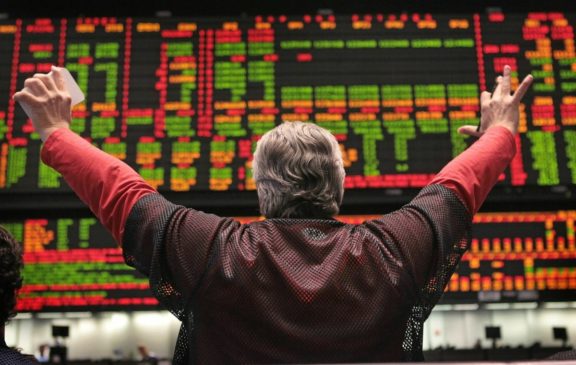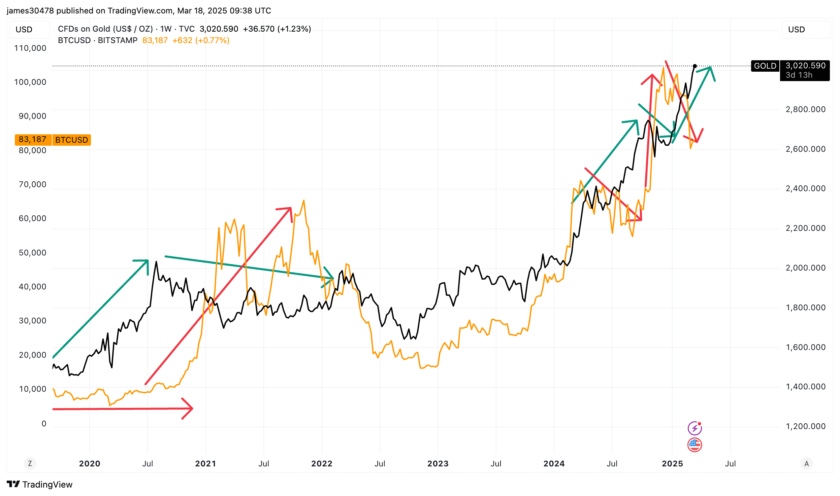- The Dow Jones started the week with a bang – but looks set to end it with a whimper.
- U.S.-China tensions continue to make investors nervous, and Trump may escalate them further today.
- Nevertheless, one historical indicator suggests stocks are primed for a major rally.
The Dow Jones Industrial Average (DJIA) looks set to open lower on Friday as investors brace for another aggravation in U.S.-China tensions.
Analysts say these geopolitical tensions have become a major threat to the stock market. But history suggests the rally may just be getting started.
The stock market is flashing bullish signals left and right. The S&P 500 already blew past a crucial technical checkpoint and cleared the “make-or-break” test at the 3,000 level. But the index just achieved something even more rare – and exceedingly more bullish.
A dizzying 94% of stocks in the S&P 500 are trading above their 50-day moving averages (DMA). That almost never happens. But when it does, the stock market virtually always moves in one direction: up.
The Dow Started the Week with a Bang, But Looks Set to Close with a Whimper
You wouldn’t know it from today’s market dynamics, though. Wall Street’s three primary indices are all set to close the month in relatively disappointing fashion.
Minutes before the open, here’s where futures were trading.
- Dow futures were down 205 points or 0.81% at 25,252.
- S&P 500 futures had fallen 0.57% to 3,020.75.
- Nasdaq futures had edged 0.11% lower to 9,450.25.
Wall Street is nervously awaiting President Donald Trump’s next move in his chess game with Beijing, which upped the stakes last week with an unprecedented power-grab in Hong Kong.
Trump announced Thursday afternoon that he would hold a news conference regarding China on Friday. That sent stocks tumbling into yesterday’s closing bell.
The weakness in the Dow persisted overnight as analysts debated what actions the White House could take – and how Beijing might respond.
Alongside lingering damage from the pandemic, JPMorgan strategist Marko Kolanovic identifies a breakdown in U.S.-China relations as one of the greatest threats to the stock market recovery.
Kolanovic said Thursday:
[A] complete breakdown of supply chains and international trade, primarily between the two largest economies (US and China), would justify equities trading drastically lower.
But if the stock market does careen “drastically lower,” it will represent a sharp divergence from historical trends.
Why This S&P 500 Indicator Is So Bullish from the Stock Market
It’s not rare for stocks to rally aggressively during bear markets. Volatility swings both ways, and some of the Dow’s biggest one-day surges have turned out to be nothing more than head fakes.
That’s why Wall Street bulls are so amped up about the fact that more than 90% of S&P 500 stocks are trading above their 50-DMA.
For one thing, it signals that the rally has breadth – that it’s not being driven by a handful mega-cap stocks with names like “Amazon” and Apple.”
But it’s even more significant than that. This indicator, while rare, tends to pop up after the stock market has suffered a steep drawdown. But – and this is the crucial part – it almost always signals that the recovery is for real.
Market pundit John Authers explains:
This is a technical indicator that has a long history of showing when a recovery after a sharp downturn has gained force and momentum. Past experience shows that stocks almost never fail to make further gains over the next 12 months.
According to Strategas Research, the stock market consistently outperforms its historical average over both the short and long-term after waving this technical flag. In fact, the S&P 500 has gained an average of 12.1% in the following 250 days.
SunTrust’s data adds to the optimistic outlook. The bank found just one occasion on which the S&P 500 had a negative 12-month performance after 90% of its member stocks traded above their 50-DMA.
But will the trend hold?
Chris Verrone, head of technical and macro research at Strategas, says that the next few months are “anyone’s guess,” but one thing’s certain. This is “another bullish momentum signature to be sure.”
This article was edited by Sam Bourgi.




